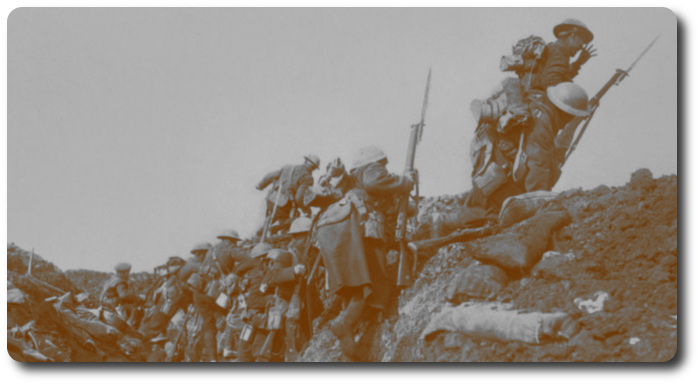Topic: CEF

Givenchy, June 1915
Canada's Part in the Present War; Empire Day, May 23rd, Ontario Department of Education, 1918

Casualty figures for the 15 Jun 1915 attack at Givenchy, as recording in the 1st Cdn Inf Bn's War Diary, were as follows:—
- Officers:—
- Killed – 10
- Wounded – 8
- Missing – 2
- Other Ranks:—
- Killed – 58
- Wounded – 218
- Missing – 82
This battle was fought on June 15th, 1915, immediately north of La Bassée Canal. It was only one of a series of engagements between the close of the battle of Festubert, May 26th, and the beginning of the great battle at Loos on September 25th; and although it will not be given a large part in the history of the campaign—Sir John French in his despatch reviewing the conflict between Festubert and Loos merely mentions the engagement—yet it was a furious action, and one in which the Canadians again showed their mettle. It is true that the fortified positions which were won here had to be abandoned later, but that was no fault of the Canadians.
The 1st Canadian (Ontario) Battalion was detailed to secure two front lines of trenches running south for 150m yards from a fortified position called "Stony Mountain" to another known as "Dorchester." Previous to the day of the attack the men, with their usual energy and ingenuity, had secretly brought up to the front trench two 18-pounder field-pieces. Fifteen minutes before the attack was due to take place, these suddenly opened fire point-blank at the Germen defences only seventy-five yards away, destroying the enemy's machine-guns and smashing the barbed wire entanglements. These guns naturally became the mark of the German batteries, and after fifteen minutes they were both silenced, one by a direct hit and the other by the bursting of a shell; but they had dome good work in clearing the way for the infantry.
Just as the guns fired their last shot, the 1st Battalion, supported by the rest of the 1st Brigade, rose from the trenches and raced toward the front lines. In a remarkably short time they had taken possession of "Dorchester" and the front trench. Some remained to reverse the parapet—that is to change the sandbags so that the trench would face the enemy—others charged forward to the second line trench. Here there was a desperate resistance; many Germans were bayoneted, and others were taken prisoners. This trench, too, changed hands; and some of the 1st Company reached even the third-line trench, but this could not be held.
So much for the "Dorchester" end of the attack. The enemy's fire was much more deadly from the direction of "Stony Mountain," and the assaulting parties here suffered severely. Bombing parties sent against this fortress were almost annihilated; machine-gun and rifle-fire literally mowed down man after man, rank after rank; so that finally the Battalion had to be content with erecting barricades just south of "Stony Mountain" and with holding the second-line trench at "Dorchester." This latter was obviously a hazardous undertaking, because the trenches were raked by a flank fire from "Stony Mountain." To make matters worse, the supply of bombs ran short and could not be replenished. Four messengers who were sent back in succession were shot dead. The bombers were, therefore, helpless; and some idea of their chagrin may be gathered from the actions of some unknown man, who, having thrown his last bomb, stood on the parapet of the Germen front-line trench, hurling stones at the advancing enemy till he was shot down.
Since the terrific enemy fire from "Stony Mountain" prevented the British from advancing, they were unable to offer the Canadians any assistance. The latter held on doggedly ion the face of heavy casualties till about 9.30, when they fell back to their own trenches. Though the action had been a gallant one, it was fruitless. When it is stated that, out of twenty-three officers and eight hundred men, only three officers and two hundred fifty men were able to return, no further proof of the grim determination of the attack is needed.

